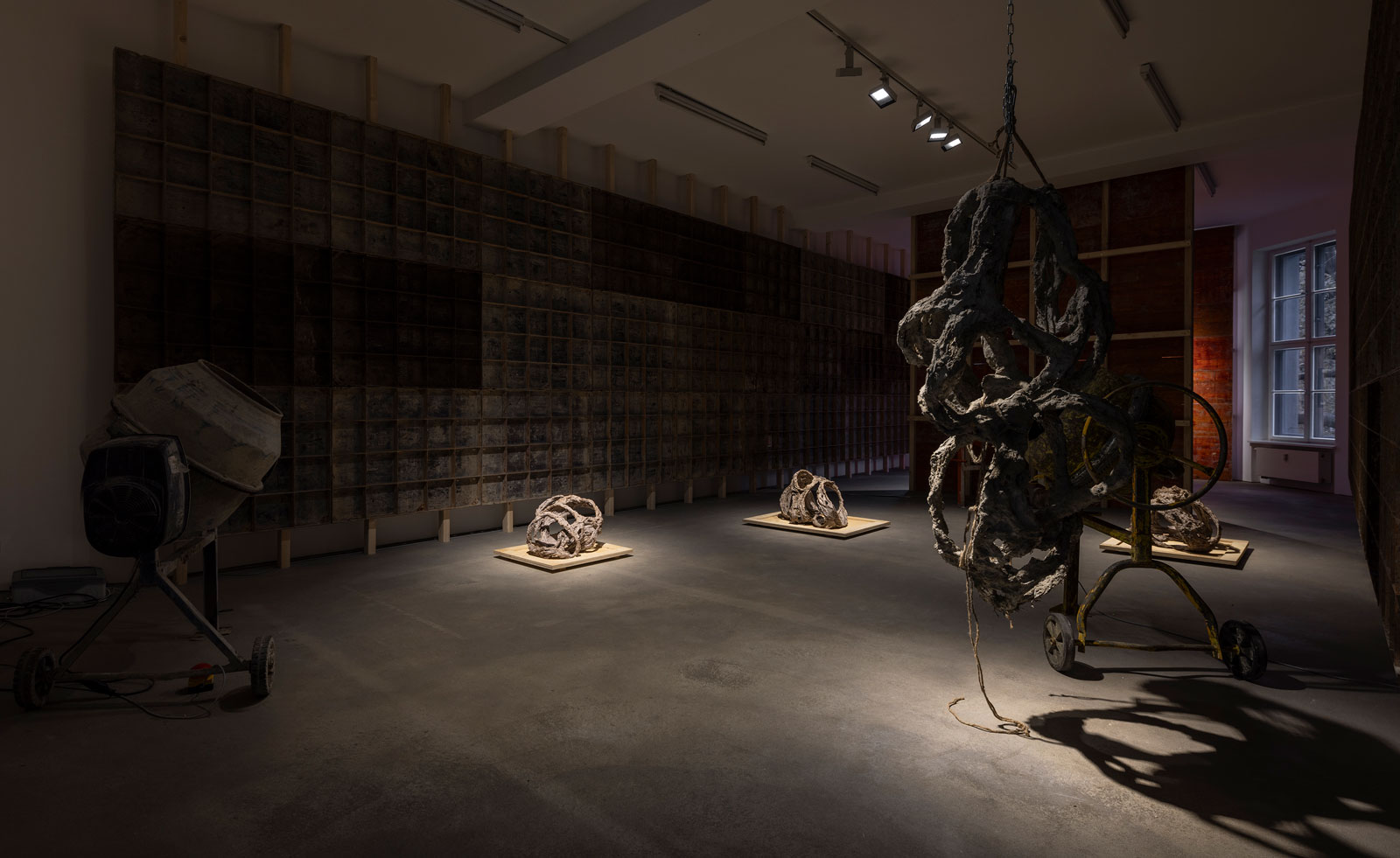Mire Lee joins artists considering boundaries, borders and territories in Berlin
Mire Lee, Liu Yujia, Gala Porras-Kim, Tan Jing, Zhang Ruyi have united for exhibition 'Territory' at Sprüth Magers, Berlin

Borders and boundaries are a physical and philosophical question for five artists, who are considering the limits of territory in a group exhibition at Sprüth Magers’, Berlin. Marking the first time the gallery has focused exclusively on female Asian artists, Mire Lee, Liu Yujia, Gala Porras-Kim, Tan Jing and Zhang Ruyi translate the limitations of the body into immersive works throughout the downstairs galleries.
For Mire Lee, the recipient of Tate Modern's 2024 Turbine Hall commission, boundaries can be both deplorable and arousing, a contrast she explores in visceral works. Here, she tells us about the living nature of her sculptural forms.
Mire Lee in Berlin

Wallpaper*: Your visceral works bring a vivid life to inanimate machines. How does your work for Territory build on the alternate life forms you have created?
Mire Lee: Works I am showing for Territory are extensions of MMK solo exhibition “Look, I'm a fountain of filth raving mad with love”. Sculptures in this show, again, have orifices or holes, or a lot of openings if you like, put next to concrete mixers which also have a large opening that resembles a mouth, an anus, or black sun. These sculptures are recurring forms that have been evolving first from semi-functional containers to sculptural bodies that leak, are permeable and penetrable. I like to imagine them as beings that are so open and exposed, thus no longer being able to be broken down.
W*: By creating sculptures that indulge all the senses, your works celebrate an intense immersion. How does the juxtaposition here of the sensual forms of the tubes and chains with the measured movements of the cement mixers cultivate the emotionality of your environment?
ML: So for this show, there are no tubes or chains deployed. although I do like to succumb to / work with limitations of whatever machineries, gears, or architectural surroundings for every project i do. Rhythm of an existing mechanical object is a good example, as if their cycle of rotation or operation is their breathing, to watch them and to listen to them somehow makes decision makings more natural and easier for me– for example to hang, drape or tangle sculptural elements of my creation.
W*: What materials, if any, do you favour in your work? What are your challenges with the physicality demanded in the process?
Receive our daily digest of inspiration, escapism and design stories from around the world direct to your inbox.
ML: Generally I love to work with metal and concrete– I enjoy the arduous feeling of labour needed to alter materiality. And then I really enjoy mixing materials together that are contrary to each other. (in the way they behave, but i guess also in the way they feel) It’s very basic, but there is always something sensual and interesting about putting a very soft material such as wet tissue next to a very hard material like a thick piece of metal rod for example.
"Territory" at Sprüth Magers, Berlin, is on show until 27 July
Hannah Silver is the Art, Culture, Watches & Jewellery Editor of Wallpaper*. Since joining in 2019, she has overseen offbeat art trends and conducted in-depth profiles, as well as writing and commissioning extensively across the worlds of culture and luxury. She enjoys travelling, visiting artists' studios and viewing exhibitions around the world, and has interviewed artists and designers including Maggi Hambling, William Kentridge, Jonathan Anderson, Chantal Joffe, Lubaina Himid, Tilda Swinton and Mickalene Thomas.
-
 The White House faced the wrecking ball. Are these federal buildings next?
The White House faced the wrecking ball. Are these federal buildings next?Architects and preservationists weigh in on five buildings to watch in 2026, from brutalist icons to the 'Sistine Chapel' of New Deal art
-
 Georgia Kemball's jewellery has Dover Street Market's stamp of approval: discover it here
Georgia Kemball's jewellery has Dover Street Market's stamp of approval: discover it hereSelf-taught jeweller Georgia Kemball is inspired by fairytales for her whimsical jewellery
-
 The best way to see Mount Fuji? Book a stay here
The best way to see Mount Fuji? Book a stay hereAt the western foothills of Mount Fuji, Gora Kadan’s second property translates imperial heritage into a deeply immersive, design-led retreat